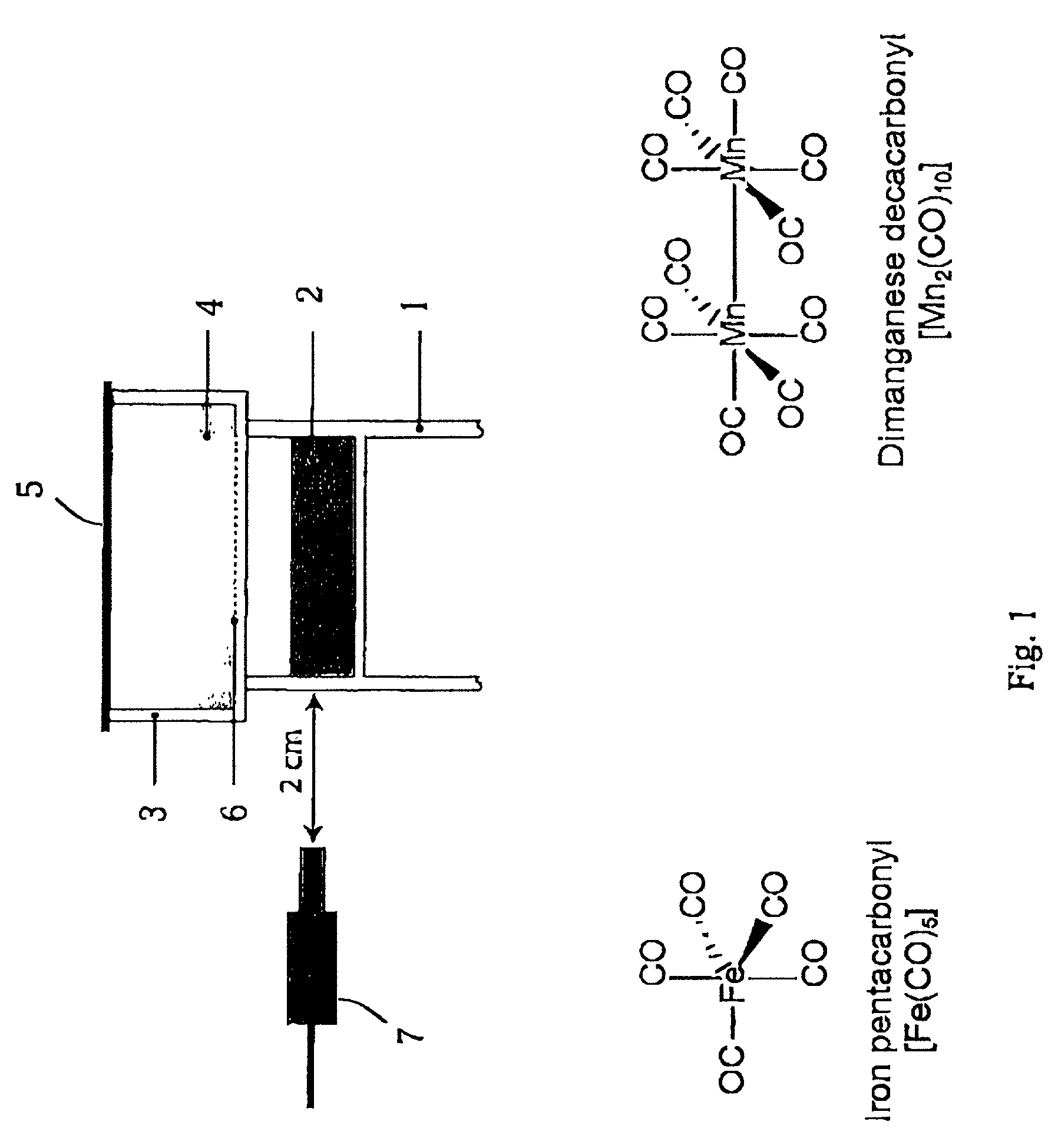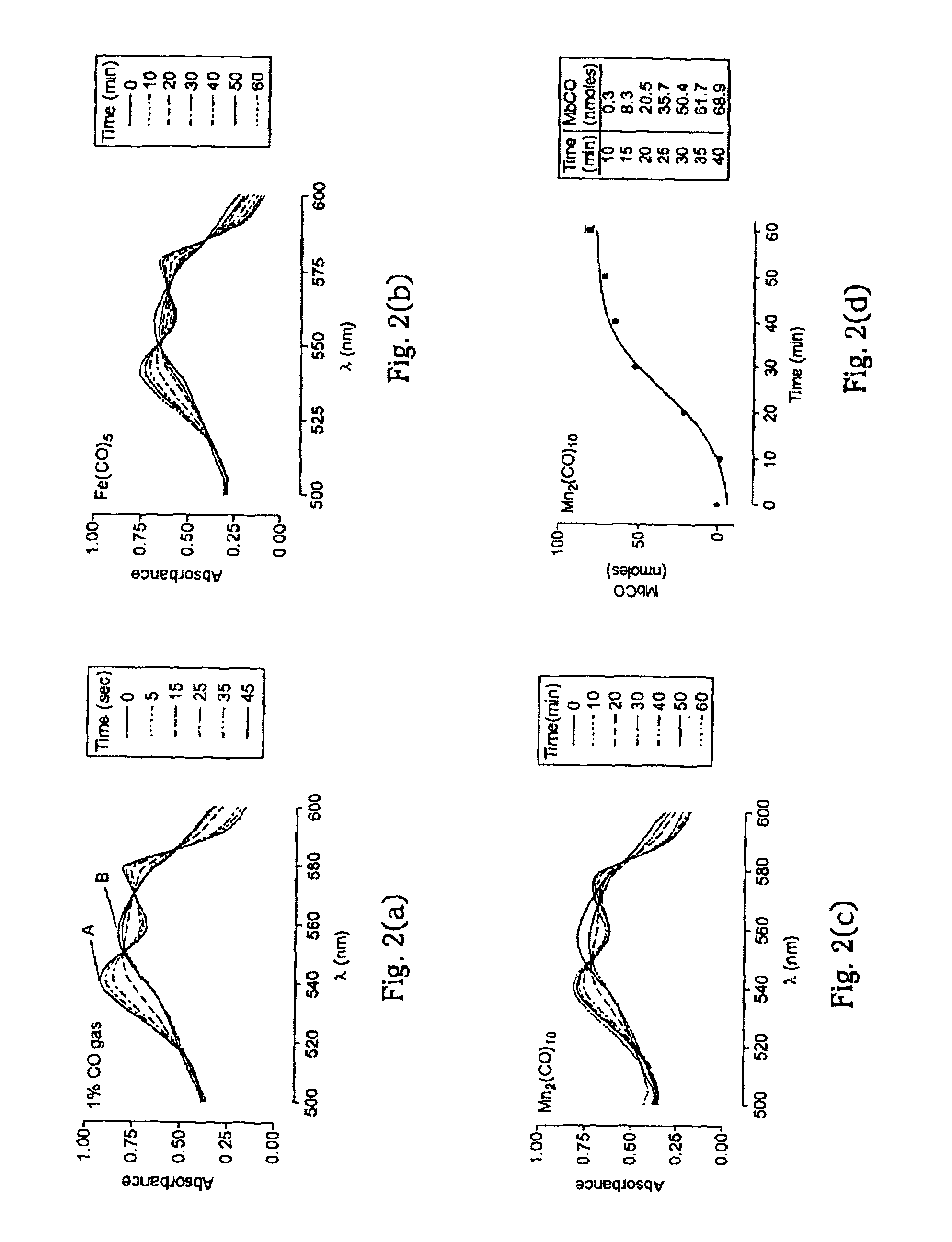Therapeutic delivery of carbon monoxide
a technology of carbon monoxide and carbon monoxide, which is applied in the direction of pill delivery, organic non-active ingredients, inorganic non-active ingredients, etc., can solve the problems of rapid reduction of the oxygen transport capacity of the cardiovascular system, and no compounds capable of co-delivering drugs
- Summary
- Abstract
- Description
- Claims
- Application Information
AI Technical Summary
Benefits of technology
Problems solved by technology
Method used
Image
Examples
Embodiment Construction
[0099]For the experiments here described, iron pentacarbonyl, [Fe(CO)5], dimanganese decacarbonyl, [Mn2(CO)10], tricarbonyldichlororuthenium (II) dimer, [Ru(CO)3Cl2]2, and ruthenium(III) chloride hydrate, RuCl3, were purchased from Sigma-Aldrich Company Ltd. (Poole, Dorset, UK). Other carbonyl complexes have been synthesized, as described below. Stock solutions of metal carbonyl complexes were prepared fresh prior to each experiment by dissolving the compounds in dimethyl sulfoxide (DMSO), water or saline. Hemin (ferriprotoporphyrin IX chloride) and tin protoporphyrin IX (SnPPIX) were from Porphyrin Products Inc. (Logan, Utah, USA). Stock solutions of both porphyrins were prepared by dissolving the compounds in 0.1 M NaOH and then adjusting the pH to 7.4 by addition of 0.01 M phosphate buffer. The guanylate cyclase inhibitor, [1H-[1,2,4]Oxadiazole[4,3-a]quinoxalin-1-one] (ODQ), was obtained from Alexis Corporation (Bingham, Nottingham, UK) and polyclonal rabbit anti-HO-1 antibodies ...
PUM
| Property | Measurement | Unit |
|---|---|---|
| pH | aaaaa | aaaaa |
| concentrations | aaaaa | aaaaa |
| thickness | aaaaa | aaaaa |
Abstract
Description
Claims
Application Information
 Login to View More
Login to View More - R&D
- Intellectual Property
- Life Sciences
- Materials
- Tech Scout
- Unparalleled Data Quality
- Higher Quality Content
- 60% Fewer Hallucinations
Browse by: Latest US Patents, China's latest patents, Technical Efficacy Thesaurus, Application Domain, Technology Topic, Popular Technical Reports.
© 2025 PatSnap. All rights reserved.Legal|Privacy policy|Modern Slavery Act Transparency Statement|Sitemap|About US| Contact US: help@patsnap.com



